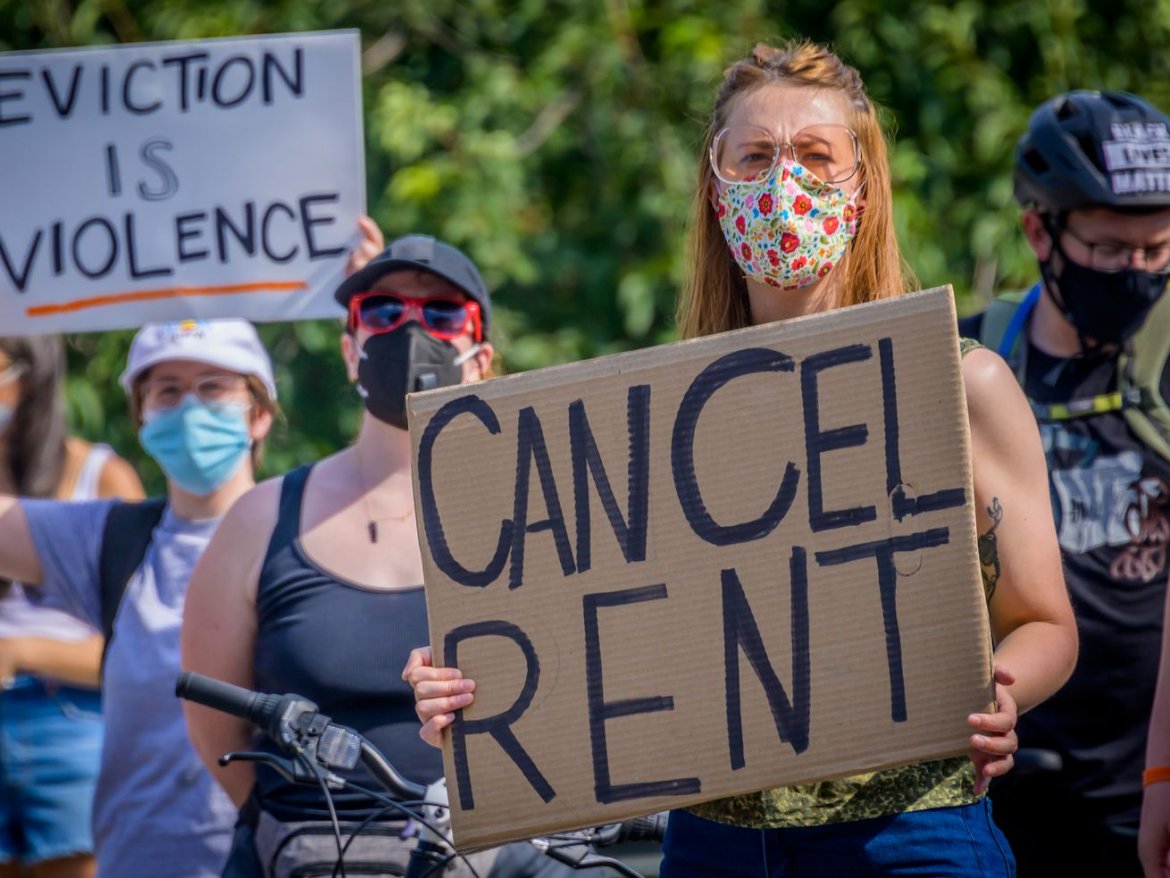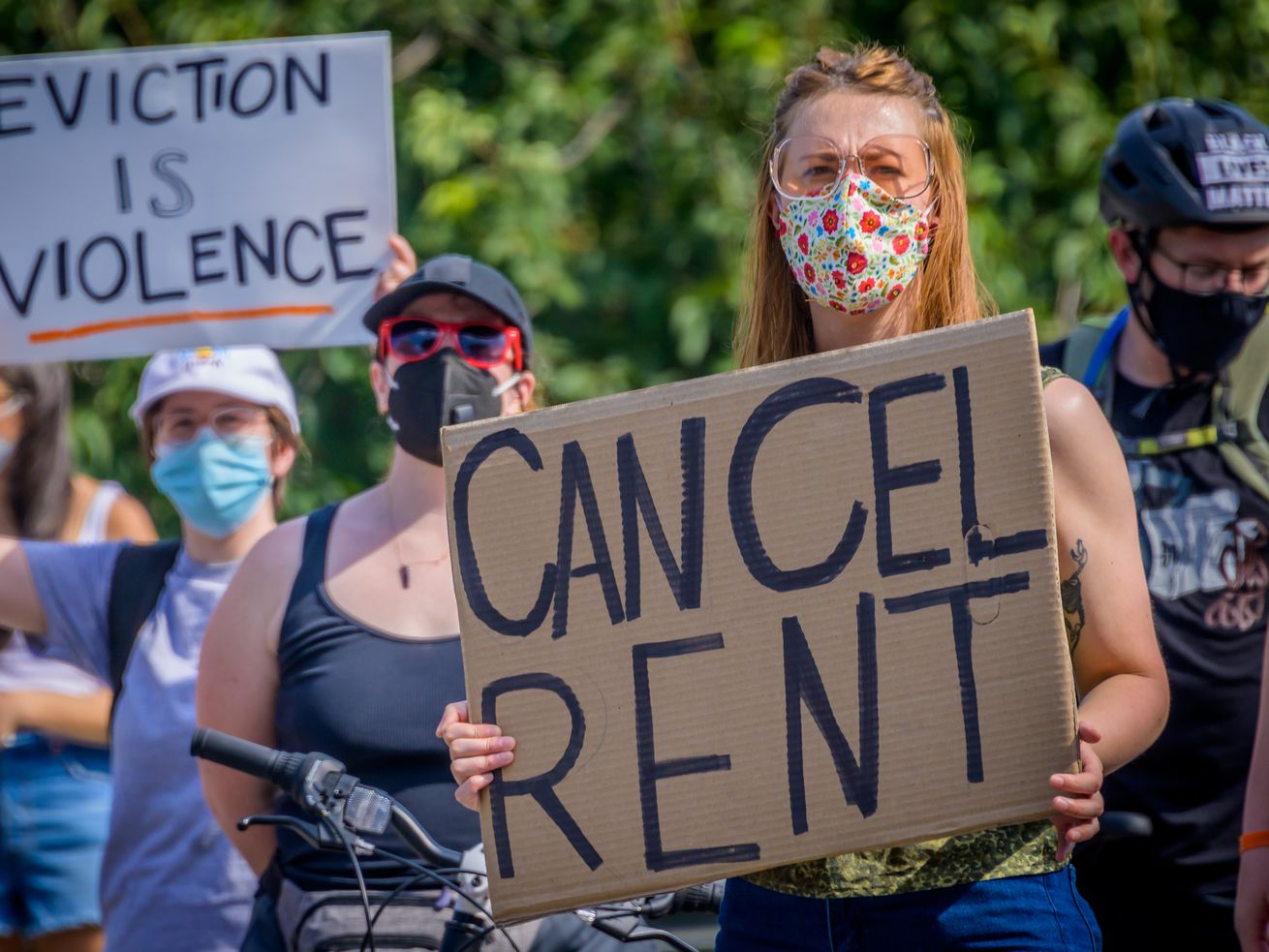
New York’s Emergency Rent Relief Program Is a Mess

 Erik McGregor/Getty Images
Erik McGregor/Getty Images
Technology and linguistic barriers are emerging that may make the rental aid inaccessible to those who need it most.
Lately, when Ren Ping Chen conducts outreach calls to members of the Chinatown Tenants Union, the conversation quickly pivots to one question: How do I apply for New York’s emergency rent relief program? The 62-year-old, who doesn’t own a computer and doesn’t speak English, has few answers to offer because he himself is struggling to access the system.
“A lot of people on these calls have no idea where to go, and neither do I,” Chen said in Mandarin. “I would like to apply, but I don’t know how to use a computer.”
As a retired construction worker, Chen is on a fixed income. His wife, however, is a home care attendant and has stopped working for fear of contracting COVID-19. With the threat of eviction in mind, the pair has managed to scrounge together rent over the past few months by subsisting on steamed bread and rice, and by dipping into their savings. “We find ways to do it to protect our home,” said Chen. But their options — and their savings — are rapidly dwindling.
The state’s $100 million rental subsidy program is intended to offer some support for New Yorkers like the Chens who are hurtling toward a financial crisis. At the end of July, federal unemployment benefits (for those fortunate enough to receive them) expire, and a court-ordered halt on evictions and related proceedings ends on August 5. Housing attorneys project that the combined expiration of these programs may result in as many as 50,000 evictions across the city.
But the modest $100 million the state program offers won’t be enough to keep many New Yorkers in their homes and out of court. And with significant technological and linguistic barriers emerging, the aid may prove to be inaccessible to those who could need it most.
Applications for the program, which is run by the Department of Homes and Community Renewal (HCR) and which was created by the state legislature in May, can be submitted online in English and Spanish or printed and mailed in. Translated versions of those forms can be downloaded in five additional languages, but these are meant only to act as guides for filling out the English or Spanish applications. A help line is available in English and Spanish, and if applicants can speak to an operator, they can request a translator. Households that aren’t proficient in English also have the added option to appoint a proxy who can fill the application out for them.
“We are working to ensure the application process is inclusive and that all eligible New Yorkers are able to apply, regardless of their proficiency in English,” said HCR spokesperson Charni Sochet.
But those efforts do little to make up for the fact that the program sets a convoluted and high bar for who can actually access the subsidy. Tenants must meet strict income restrictions and have documentation to back that up. Gathering that paperwork can be a tall order for those who work in the gig economy or who are undocumented. Others still may be flat out ineligible owing to their immigration status. It’s a tough process to navigate, and the challenge is exacerbated by the fact that applicants are only given a two-week window in which to apply. The window closes on July 30 at 6 p.m.
In a Tuesday letter to HCR Commissioner RuthAnne Visnauskas, the statewide Housing Justice For All coalition charged the agency with “completely overlook[ing] public outreach” ahead of the application period. That lack of advance notice, the group wrote, made the two-week window “insufficient” for tenants to make arrangements to apply.
The coalition, which estimates that over 1.5 million New Yorkers have not been able to pay rent due to the pandemic, urged Visnauskas to extend the deadline to August 28.
As of Monday, more than 49,000 New Yorkers had successfully submitted applications to the program, according to HCR. Astoria resident Alex Santos was among them, but it took some effort. Santos rose early the day the program launched on July 16 to apply for his 64-year-old mother, who lacks reliable internet access and isn’t very tech savvy.
But each time he tried to apply, the same error message popped up: “Whoa, hold it! You are not authorized to access this page. Sorry.” He phoned the help hotline but was told to hold off until they worked through the glitch. Four days later, and after more than a dozen attempts, he managed to successfully file his mother’s application. “This money could literally be the difference between someone being homeless or not. It’s crazy that on day one there were already issues,” said Santos. “My mom was lucky that she has me, but I worry about the people who don’t have a relative or a friend to give them that extra help.”
The state says it has since resolved the issue, blaming error messages on anti-fraud measures that limit the number of concurrent logins to state systems. In other words, the application portal was so overwhelmed by the flood of New Yorkers applying for the aid that the traffic was flagged as fraudulent.
Under normal circumstances, Chen could have walked five blocks to his local Asian Americans for Equality office. Staffers with the community-based group would have sat with him and walked him through the aid application, as they regularly do for seniors and those who aren’t proficient in English. But due to COVID-19, those offices are closed and many similar community groups have suffered budget and staff cuts that have made it harder for them to serve the immigrant communities that have been hardest hit by the pandemic. Other facilities, like libraries, that New Yorkers often rely for internet access are also closed.
Commissioner Visnauskas noted that’s why the agency has partnered with more than a dozen community-based organizations across the state where would-be applicants can call for extra help. Groups who aren’t even officially partnered with the state, like the Chinese-American Planning Council (CPC), which serves 60,000 members speaking a combined 25 languages across the five boroughs, have been inundated with questions from applicants who have hit language or eligibility snags.
But even with state support, the community groups can’t always offer answers.
Take, for instance, the case of one family living in a mixed immigration status household. To the surprise of Carlyn Cowen, CPC’s chief policy and public affairs officer, HCR said it was unsure if the family qualified for rental aid and directed them to another state agency, this time the Office of Temporary and Disability Assistance. But that department also couldn’t provide a concrete answer.
The CPC ultimately encouraged the family to apply, but with the looming concern that they might not even be eligible. “We’ve had to give people our best guess and say, ‘Let’s apply.’ But you’re hoping you’re not wasting someone’s time because it’s time and hope that people don’t have to waste,” says Cowen.
Meanwhile, figuring out how to prove an income loss can be its own challenge.
When the pandemic hit in March, Rosie Hernandez says it felt like “everything slowly collapsed.” Her parents, who are both undocumented and live with her, worked as house cleaners and their income practically vanished overnight. Her father managed to find a job delivering food for an Ecuadorian restaurant in April, but her mother — who has a heart condition and is uninsured — stayed put at their two-bedroom Sunset Park apartment in effort to preserve her health.
Hernandez, 23, has continued working at an animal shelter in Kipps Bay throughout the pandemic. But the blow to her parents’ income has made it difficult to make ends meet, and has left the family of three with little choice but to make partial rent payments since May. Now, without traditional documentation of her parents income and how it has recently changed, she has little evidence to prove how dramatically her household is suffering.
“It’s overwhelming. It’s like I have the weight of my family’s future crushing down on me,” says Hernandez, who said she learned about the program last week and has been scrambling to gather documents to apply. “We really need the help, but how am I supposed to prove that when there isn’t really a paper trail?”
That’s a question many New Yorkers are grappling with, says Justin La Mort, the supervising attorney for the housing unit at Mobilization for Justice. But the harsh reality is that even for those who successfully apply, there likely won’t be enough of the $100 million pot to go around.
Who will actually receive the subsidy is not determined on a first come, first serve basis. Instead, HCR says it will prioritize households with “the greatest economic and social need” according to income loss, rent burden, and the risk of homelessness. But that is startlingly vague, and La Mort says he’s been upfront with applicants that submitting an application does not necessarily mean they will receive a slice of that state support.
“Frankly, I’ve spent a lot of time working on a program where I don’t even know if the people I’m submitting applications for are going to get help,” says La Mort. “The reason I’m doing this is because this is the only program available to people right now, and that’s terrifying.”
Love where you live


